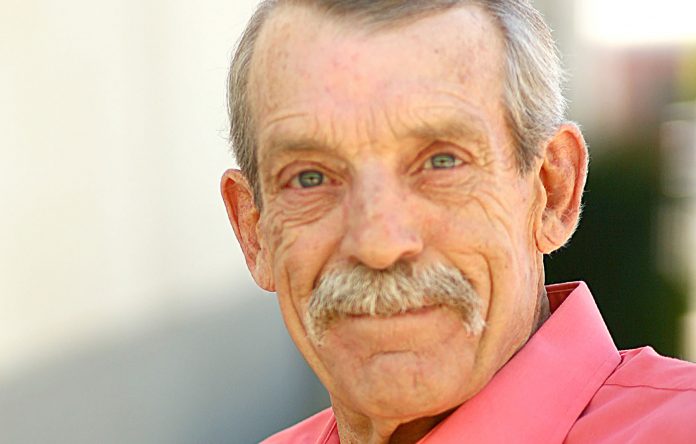Some years back there was a fellow in Greenfield who owned an airplane, and as I had no qualms about flying in a small craft, there were many occasions to see the Valley and surrounding areas from aloft. Because I spent the first 19 years of my life in the town, I began to know my surroundings, as we all do, by growing into them.
We learn our way around our houses and our yards when we are still little crumb crunchers toddling around with the newness of curiosity, and as we age new surroundings come our way and soon we are able to navigate the streets, alleys, vacant lots and the homes and yards of some of our neighbors. When foot travel gave way to bicycles, our world expanded; and in Greenfield that meant a park, two rivers and a canal were now accessible for long summer excursions for the young and adventurous.
When growing up we all are passengers in vehicles, some our parents, some friend’s parents, and the occasional school bus; in Greenfield the kids from the outlying farm areas around town and Arroyo Seco rode buses to school all year, but we town dwellers only rode on special occasions. It was during these times that we came to know more and more of the Valley and its highways and byways until we knew our surroundings for miles around. When we finally reached that magical age of 16 years old and became eligible to drive a car without adults, well, then the world was our oyster, as they say, and we became increasingly more aware of the many county, and private, roads within daily driving range.
But it is not until viewing the area from the vantage point of a bird that one sees the terrain and the lay of the land and how those elements influenced the birth of a town. In all other cases, the towns of the Salinas Valley were fixed according to the Southern Pacific Railroad line. Chualar, Soledad and Gonzales are all situated next to and east of the tracks, King City lies west of the tracks, but Greenfield is two miles off the rail line to the west. This also is true of those towns and the Salinas River, all but Greenfield sit to the east of the flow. The reason for that is when the tracks were laid, the best route down the Valley was to the eastern foothills south of Soledad to avoid flooding when the Arroyo Seco and Salinas rivers merged in the rainy season.
Prior to the California Home Extension program selling lots for what was to become Clark City, later Clark Colony and then, later yet, Greenfield, the area was known as Three Mile Flat. That is because the town sits on an alluvial plane formed by runoff of the Arroyo Seco River over thousands of years. When leaving to the north on El Camino Real, one drops off the plain between Thorne Road and Hudson Road; when leaving eastward on Elm Avenue, the drop is just past Third Street; and when heading south, the decline starts at Elm Avenue. The way westward, though, is a climb into the Arroyo Seco Canyon and the Sierra de Salinas Range. When viewed from the air, one thing always struck me: the town of Greenfield was, in my humble opinion, misplaced. Not misplaced as in lost, but as in founded in the wrong place. It should be about two miles to the west.
Had the founding members sold the original lots starting along the eastern bench of the Arroyo Seco river shed, the town would have as its northern border Thorne Avenue with Peach Road and 16th Street as its western border. I realize Peach, 15th and 16th streets were gobbled up by private interests years ago, but they still exist on many maps. Elm would continue to be the southern border, but to the east it would look much different with the present routes of Business 101 and Highway 101 much further from the center of town. How the city would have grown had that been its beginnings is certainly up to conjecture, but I think the town would have benefitted from more westerly upbringing.
***
The genesis of the above musings came about through communication with a lifelong buddy, lifelong in this case meaning we met around 1957 at Greenfield Elementary School, made it through high school together and then over the decades have stayed close. This is not uncommon in the world of friendship, there are many relationships that have weathered the years, but there are many more names and faces once known now long gone from the Valley; either moved away or planted under it.
In one of our recent chats, we discussed how few kites one sees nowadays; kites are gentle toys held aloft by nature, so they don’t seem to be able to compete with the excitement of video games or skateboarding. But on the street where a bunch of us grew up, we knew kite flying, and back in those dark ages we had the space to achieve our aerial entertainment.
In the time about which I write, the late ’50s and early ’60s of the last century, Fifth Street in Greenfield, from Oak to Palm avenues, was filled with houses on the east side. But the west side of the street had only four houses: one facing Oak, one behind that on Fifth, a small house midway up the block and one house facing Fifth at the corner of Palm. The rest of the street to the alley was all vacant lots below wide-open spaces, and with a wind source directly at our backs. It was kite heaven every summer, with sometimes seven or eight of us vying for airspace.
Maybe someone will take interest in kites again; you never know, it might just be the thing for folks to come together on and enjoy a little entertainment that doesn’t whizz, boom, zing, bang or otherwise offend the senses.
Take care. Peace.














